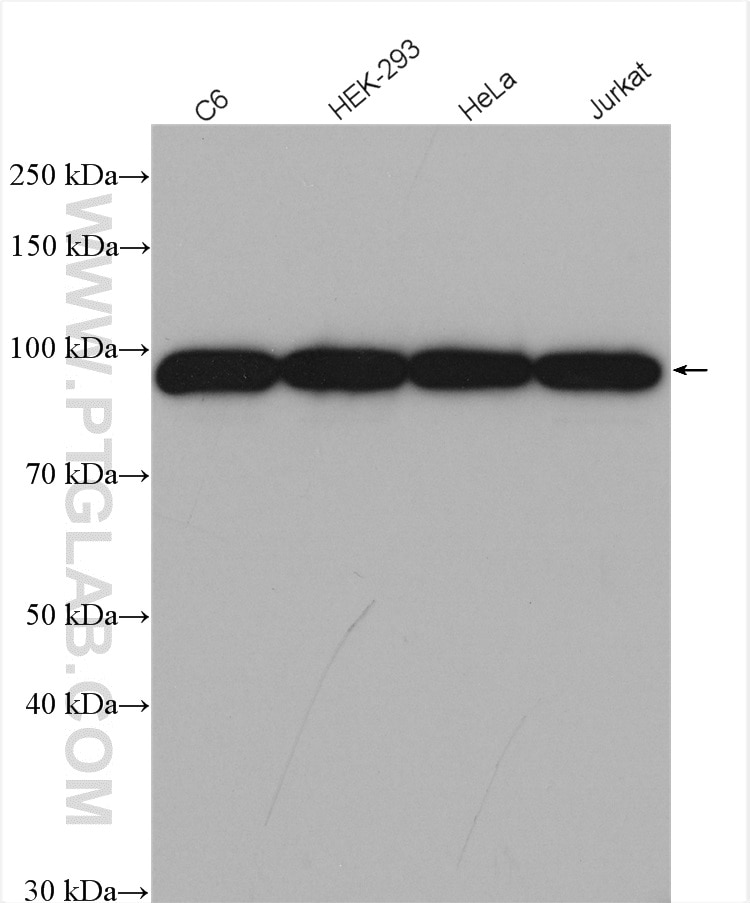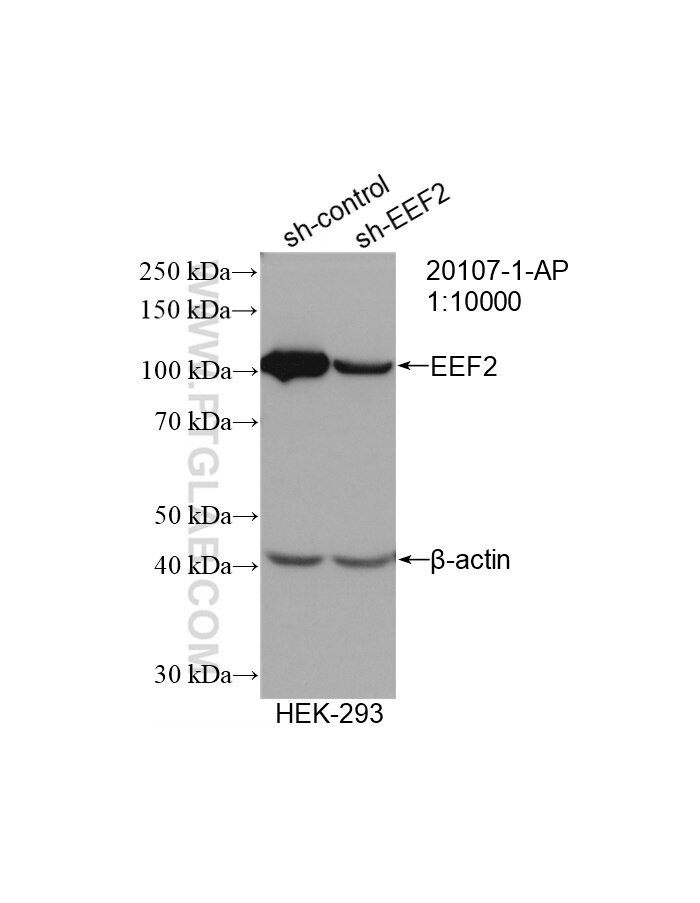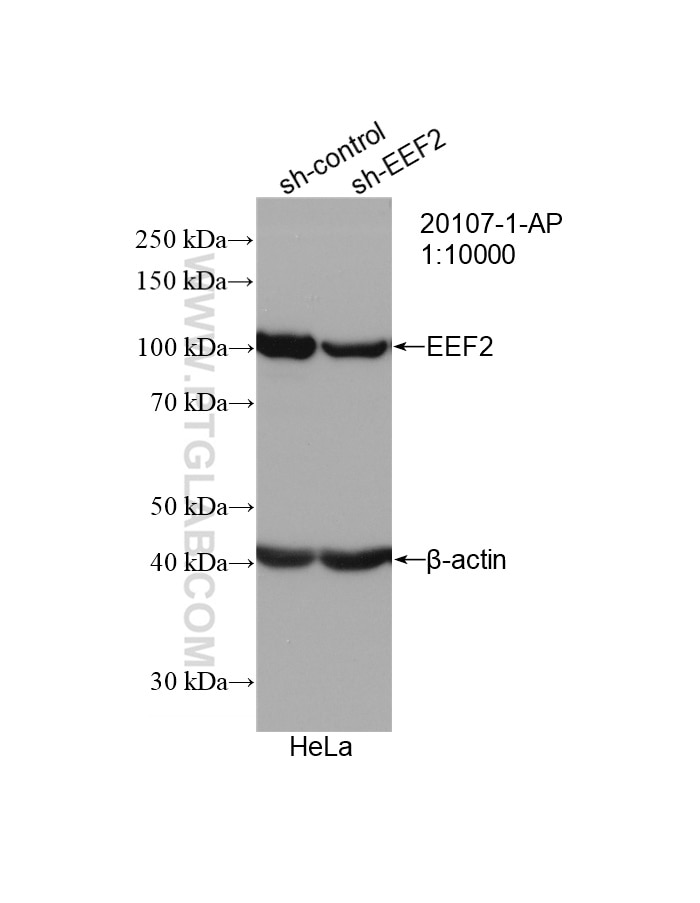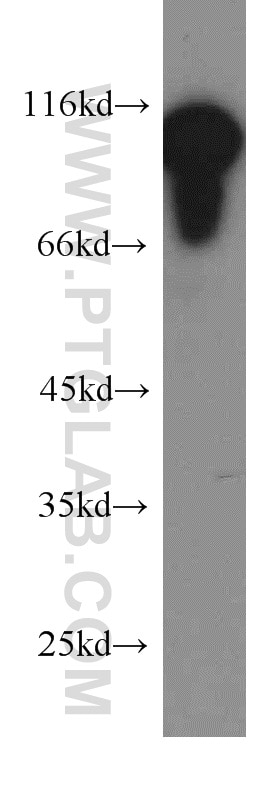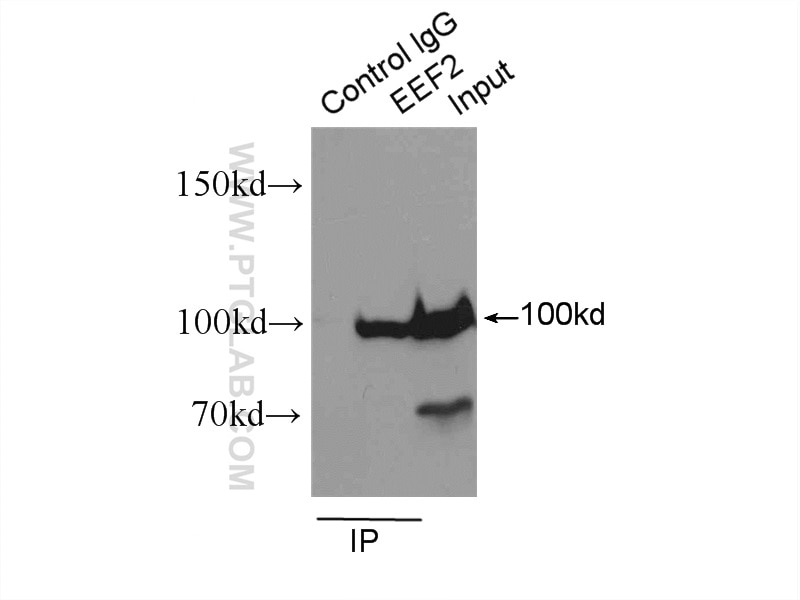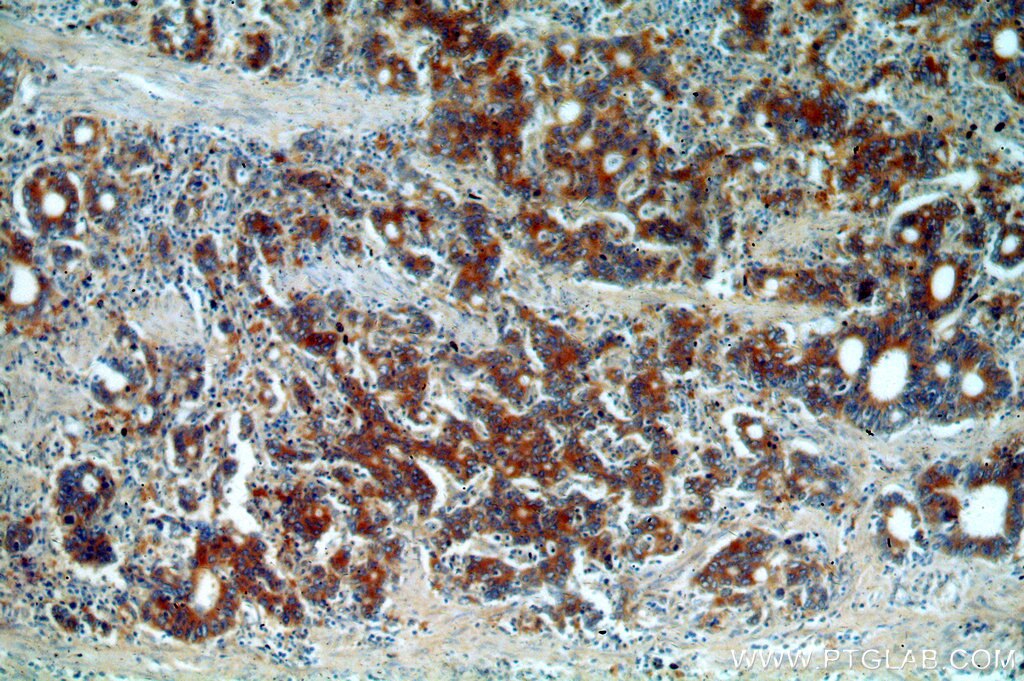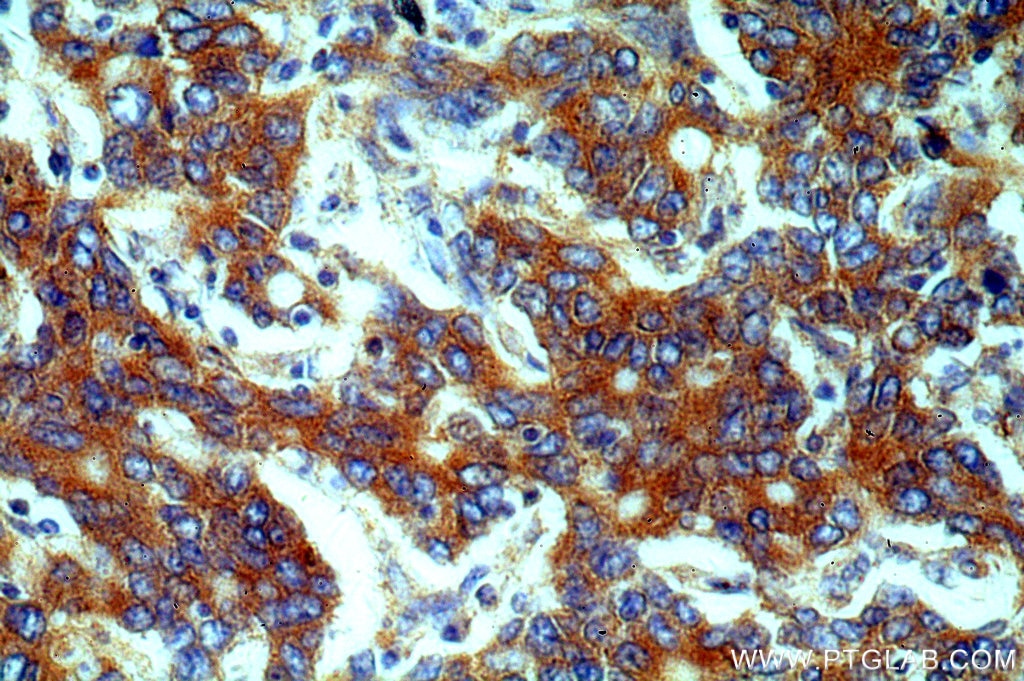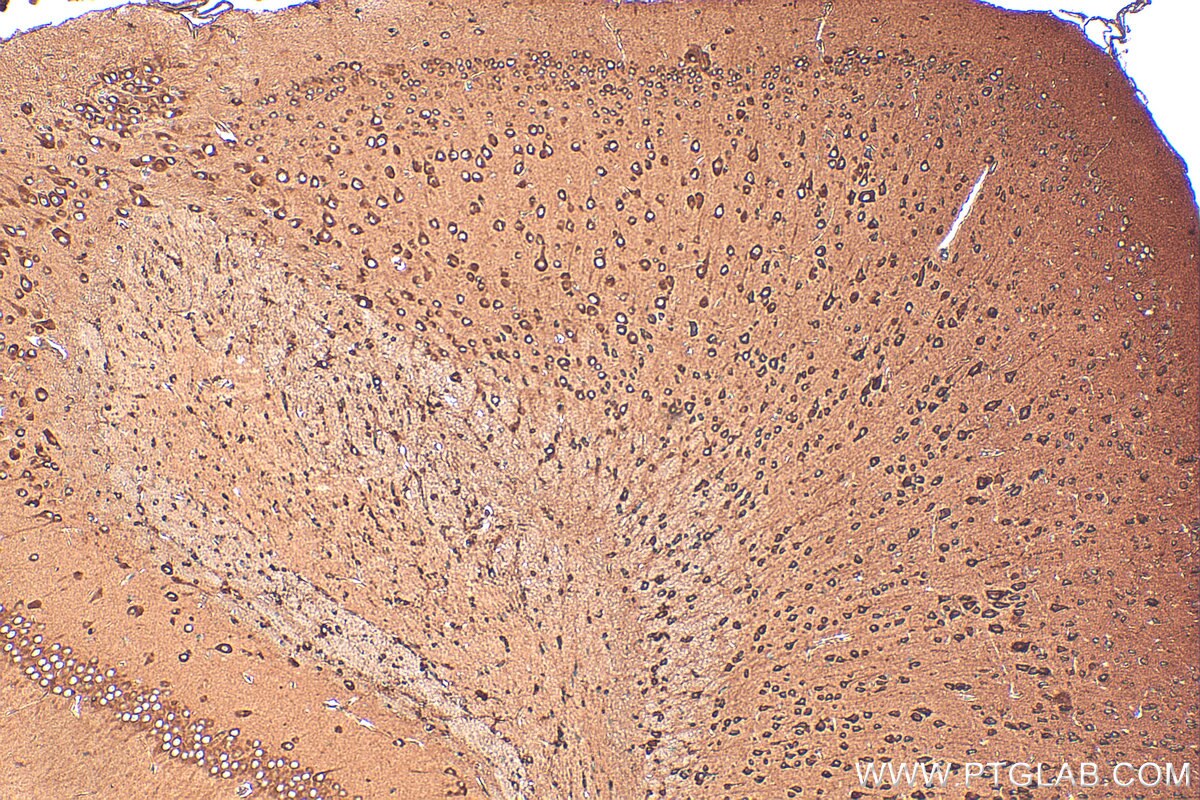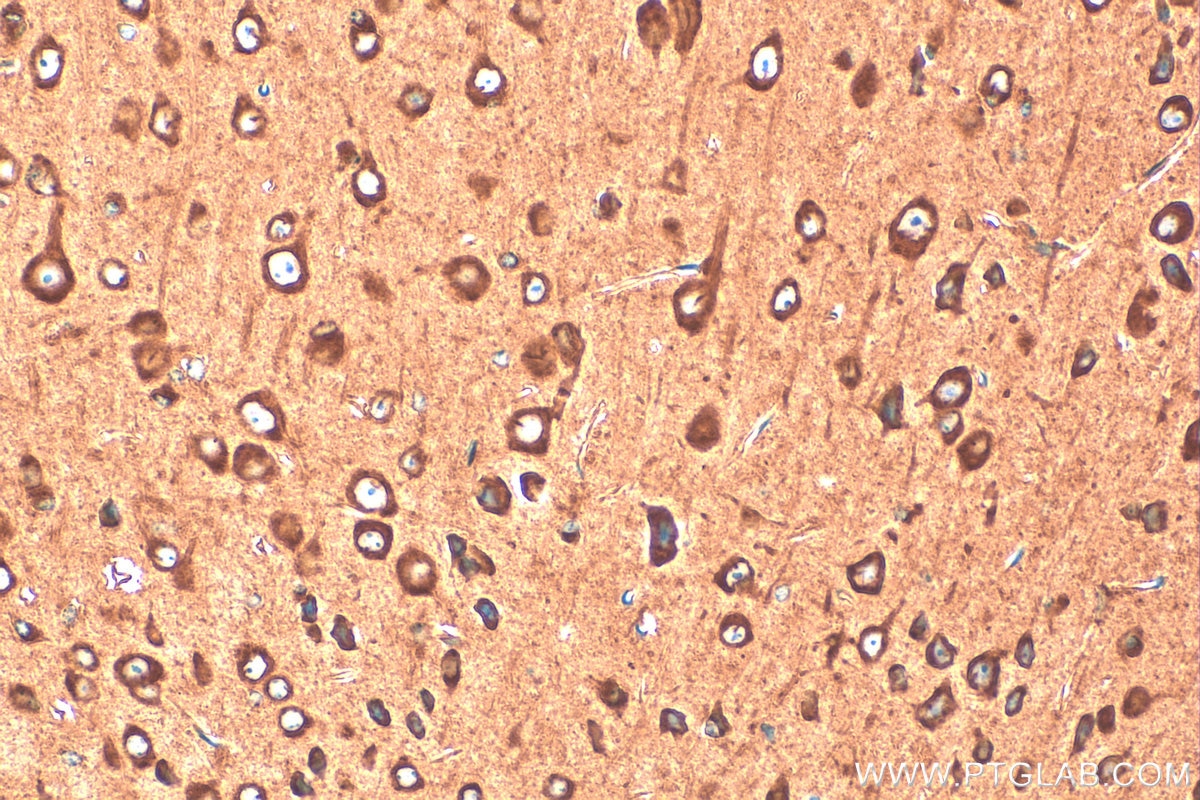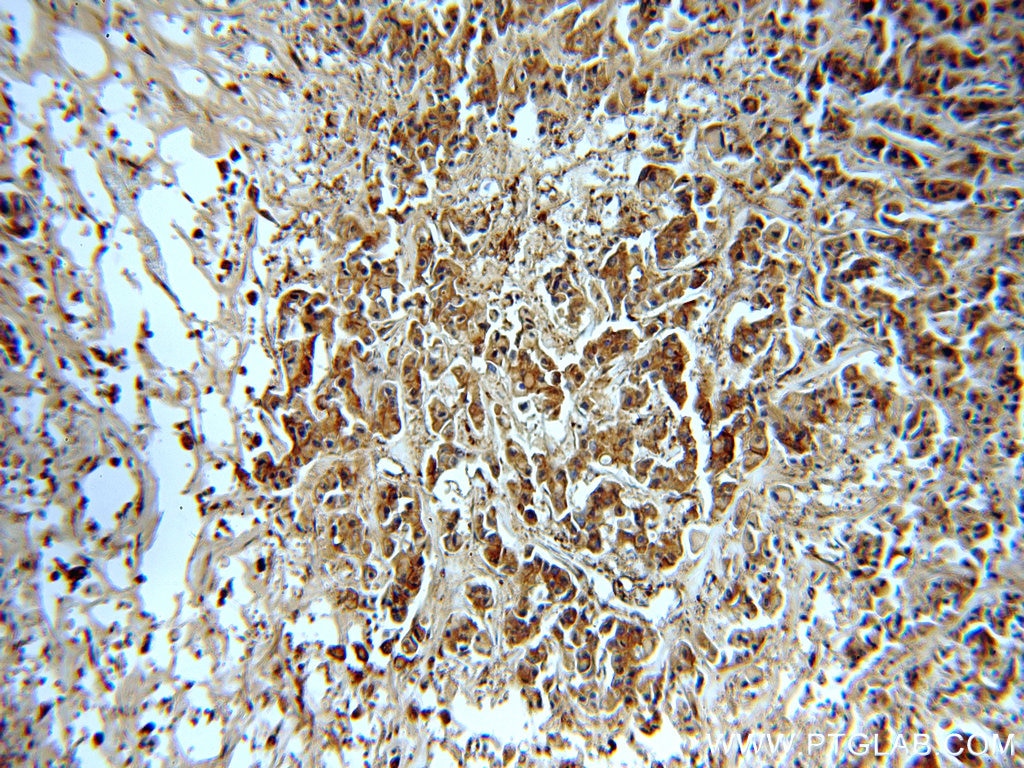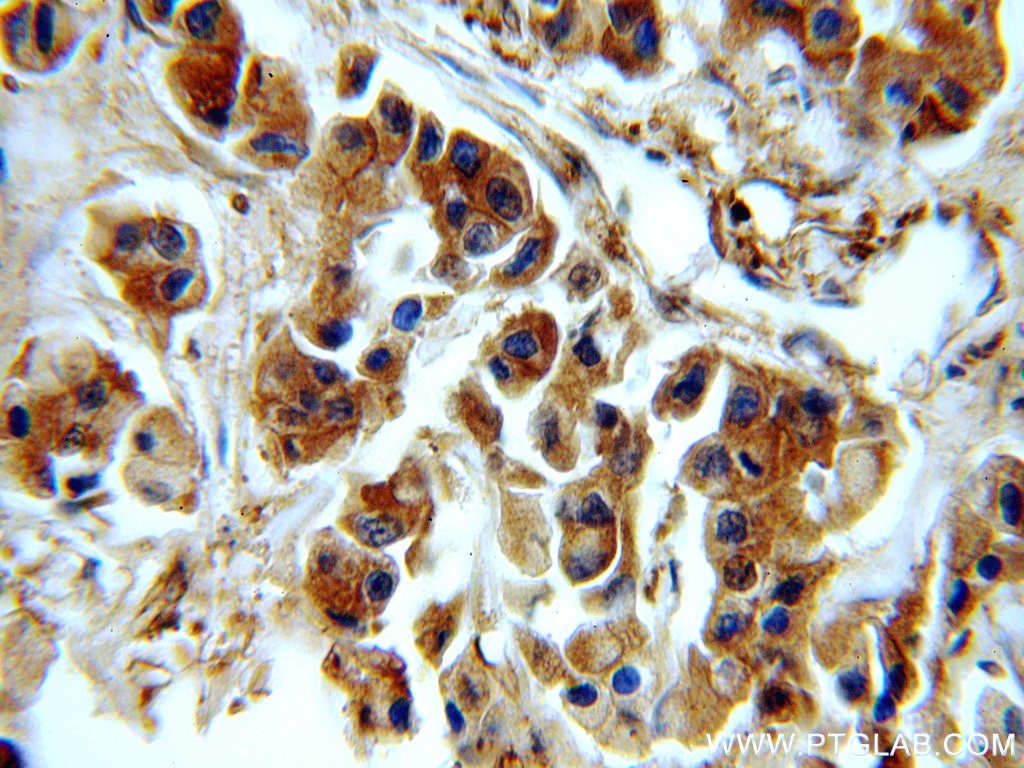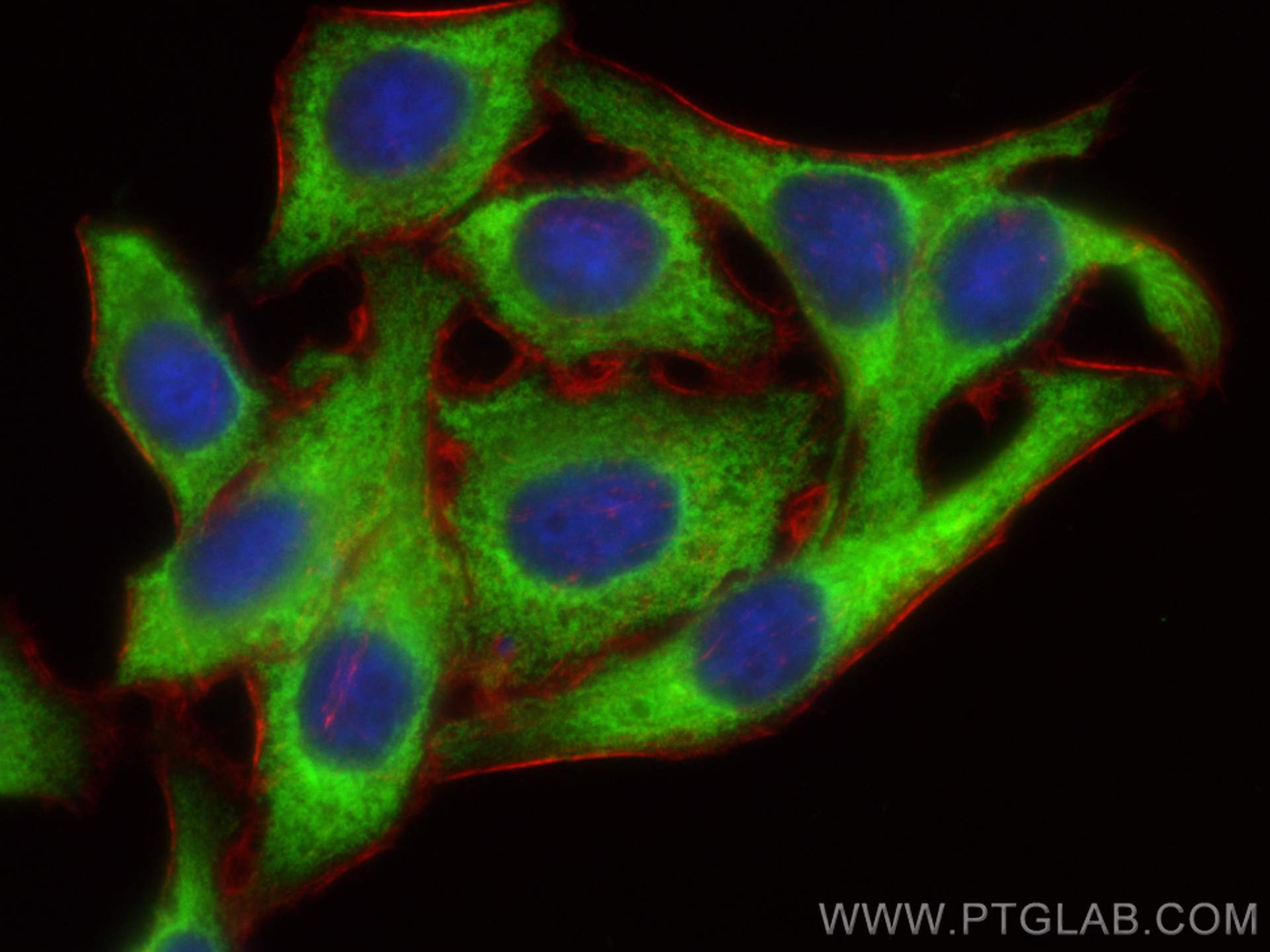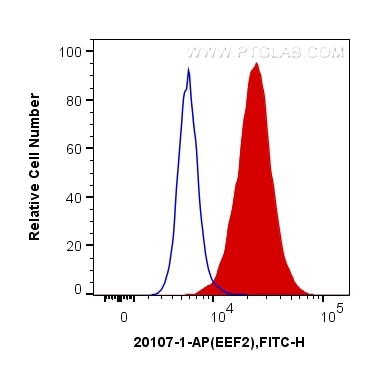- Phare
- Validé par KD/KO
Anticorps Polyclonal de lapin anti-EEF2
EEF2 Polyclonal Antibody for WB, IHC, IF/ICC, FC (Intra), IP, ELISA
Hôte / Isotype
Lapin / IgG
Réactivité testée
Humain, rat, souris et plus (1)
Applications
WB, IHC, IF/ICC, FC (Intra), IP, CoIP, RIP, ELISA
Conjugaison
Non conjugué
N° de cat : 20107-1-AP
Synonymes
Galerie de données de validation
Applications testées
| Résultats positifs en WB | cellules C6, cellules HEK-293, cellules HeLa, cellules Jurkat, cellules NIH/3T3 |
| Résultats positifs en IP | cellules HeLa |
| Résultats positifs en IHC | tissu cérébral de souris, tissu de cancer de l'estomac humain, tissu de cancer du sein humain il est suggéré de démasquer l'antigène avec un tampon de TE buffer pH 9.0; (*) À défaut, 'le démasquage de l'antigène peut être 'effectué avec un tampon citrate pH 6,0. |
| Résultats positifs en IF/ICC | cellules HepG2, |
| Résultats positifs en FC (Intra) | cellules HeLa, |
Dilution recommandée
| Application | Dilution |
|---|---|
| Western Blot (WB) | WB : 1:2000-1:16000 |
| Immunoprécipitation (IP) | IP : 0.5-4.0 ug for 1.0-3.0 mg of total protein lysate |
| Immunohistochimie (IHC) | IHC : 1:500-1:2000 |
| Immunofluorescence (IF)/ICC | IF/ICC : 1:50-1:500 |
| Flow Cytometry (FC) (INTRA) | FC (INTRA) : 0.20 ug per 10^6 cells in a 100 µl suspension |
| It is recommended that this reagent should be titrated in each testing system to obtain optimal results. | |
| Sample-dependent, check data in validation data gallery | |
Applications publiées
| WB | See 10 publications below |
| IHC | See 1 publications below |
| IP | See 1 publications below |
| CoIP | See 1 publications below |
| RIP | See 2 publications below |
Informations sur le produit
20107-1-AP cible EEF2 dans les applications de WB, IHC, IF/ICC, FC (Intra), IP, CoIP, RIP, ELISA et montre une réactivité avec des échantillons Humain, rat, souris
| Réactivité | Humain, rat, souris |
| Réactivité citée | Humain, poisson-zèbre |
| Hôte / Isotype | Lapin / IgG |
| Clonalité | Polyclonal |
| Type | Anticorps |
| Immunogène | EEF2 Protéine recombinante Ag13826 |
| Nom complet | eukaryotic translation elongation factor 2 |
| Masse moléculaire calculée | 858 aa, 95 kDa |
| Poids moléculaire observé | 95-100 kDa |
| Numéro d’acquisition GenBank | BC126259 |
| Symbole du gène | EEF2 |
| Identification du gène (NCBI) | 1938 |
| Conjugaison | Non conjugué |
| Forme | Liquide |
| Méthode de purification | Purification par affinité contre l'antigène |
| Tampon de stockage | PBS with 0.02% sodium azide and 50% glycerol |
| Conditions de stockage | Stocker à -20°C. Stable pendant un an après l'expédition. L'aliquotage n'est pas nécessaire pour le stockage à -20oC Les 20ul contiennent 0,1% de BSA. |
Informations générales
EEF2 (Eukaryotic Elongation Factor 2), also known as EF-2 and EF2, is a crucial protein involved in the process of protein synthesis in eukaryotic cells. It plays a pivotal role in the elongation phase of translation, where it facilitates the movement of the ribosome along the mRNA strand. This movement is essential for the addition of amino acids to the growing polypeptide chain.
Protocole
| Product Specific Protocols | |
|---|---|
| WB protocol for EEF2 antibody 20107-1-AP | Download protocol |
| IHC protocol for EEF2 antibody 20107-1-AP | Download protocol |
| IF protocol for EEF2 antibody 20107-1-AP | Download protocol |
| IP protocol for EEF2 antibody 20107-1-AP | Download protocol |
| Standard Protocols | |
|---|---|
| Click here to view our Standard Protocols |
Publications
| Species | Application | Title |
|---|---|---|
Cancer Lett eEF-2 Kinase-targeted miR-449b confers radiation sensitivity to cancer cells. | ||
Carcinogenesis PLAGL2 promotes Snail expression and gastric cancer progression via UCA1/miR-145-5p/YTHDF1 axis | ||
Biomed Microdevices Incorporation of VSV-G produces fusogenic plasma membrane vesicles capable of efficient transfer of bioactive macromolecules and mitochondria. | ||
Pathol Res Pract miR-183-5p acts as a potential prognostic biomarker in gastric cancer and regulates cell functions by modulating EEF2. | ||
BMC Nephrol Bioinformatics analysis of proteomics profiles in senescent human primary proximal tubule epithelial cells. |
